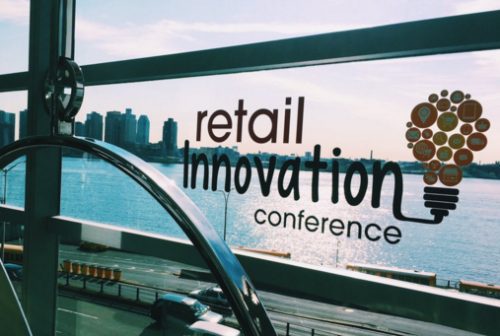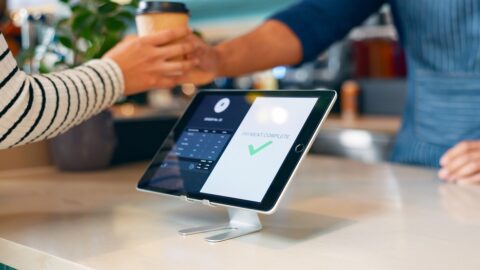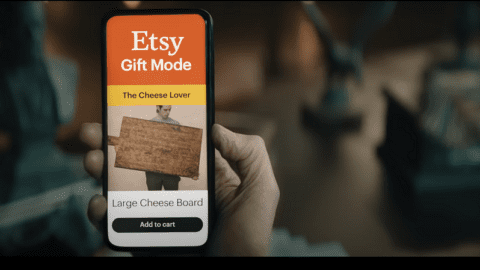This year’s Retail Innovation Conference, held May 10-11 at Apella in New York City, brought together 185 of the industry’s most innovative retail executives, who shared uniquely valuable retail disruption and innovation trends.
Also featured at #RIC16 were eight Innovation Labs, highly focused workshop sessions covering a wide range of current “pain points.” Presentations were led by the industry’s leading solution providers and their customers.
Here are some key takeaways from these sessions:
Advertisement
- Referred shoppers are better customers;
- The store associate needs to know more than what that consumer can find on Google;
- Consumer demand for omnichannel shopping options are not currently being met by retailers;
- When the experience per square foot is right, then the sales follow;
- Digital signage has 10x the awareness of static signage;
- The application of IoT within retail has a potential impact ranging from $410 billion to $1.2 trillion per year by 2025;
- Done well, personalization creates 1.7 times greater conversion rates and increases profitability 26%; and
- Design user testing to build empathy and an understanding for users that don’t have similar tastes.
Read on to learn more, and be on the lookout for more detailed coverage of the 2016 Retail Innovation Conference.
Marketing Through Your Customers
Sponsor: Extole
“Referred customers tend to be better customers. They convert at rates ranging from three to six times the average; they account for more than 10% of all online transactions, and they themselves are three times more likely to then refer their own friends.” — Claire Malik, Senior Client Services Manager, Extole
“Our referral program brought average customer acquisition costs down by 20%, in part because we were rewarding customers with product rather than dollars, which allowed us to preserve this cash for other marketing ventures. We saw a 13% to 16% conversion rate off these referred friends, which is two to three times our average rate.” — Jordan Finger, Director of Customer Acquisition, Freshly
Transforming Retail Into A Digital Business
Sponsor: Google Apps For Work
“Consumers are getting more savvy and digitized: 94% of customers actually start their shopping journeys on Google.com. What’s happening is it’s creating a more informed shopper and a reduction in store traffic. We’ve seen a 53% drop in actual store traffic, but each visit is two times as productive because that consumer is walking in with a purpose. They know what they’re looking for. They have higher expectations, which means the store associate needs to know more than what that consumer can find on Google.”
“One in four shoppers avoids setting foot into a retail store because they’re not sure if what they’re looking for is in stock. What we see in our search results is that, in the last five years, there is a 34x increase in shoppers that are looking for local information near them. When we surface that kind of local inventory information, people are more likely to come to stores. And most of them will actually visit a physical store within one day of conducting a Google search. It’s not about having the data; it’s about what you do with the data.”
— Joyce Lee, Member, New Product Incubation Team, Google
Evolution of Merchandising: How Smart Retailers Stay Alive
Sponsor: iQmetrix
“It’s important to state that retailers shouldn’t just want to ‘stay alive’ because they all want to grow and expand. Retailers want to improve their ability to deliver omnichannel shopping experiences, but are finding it difficult to tie up all the loose ends that make a complete end-to-end experience. Consumer demands for omnichannel shopping options are not currently being met by retailers.“
“Touchscreens are sexy to have in stores, but what good is it if the back end doesn’t meet up? Retailers must study how their channels, technology and teams are aligning. Is the legacy tech interacting with the pilot tech? Can you keep your SKU breadth with a smaller footprint? By adopting sophisticated platform technology, retailers can facilitate the delivery of omnichannel through a centralized commerce approach.”
— Joanne Helm, Business Development Officer, iQmetrix
From Visions To Insight: New Technology And Its Effect On The Changing Retail Landscape
Sponsor: Prism
“The dynamics of retail are always changing. Shoppers are more knowledgeable than ever and have more retail decisions than ever before. But retailers have more data than ever; who their customers are and what they like.”
“Stores are your most powerful media; they bring customers something tactile and tangible. They offer an escape from our digital lives. While e-Commerce gets all the data, video analytics is transforming the way we look at stores. In today’s stores, we can analyze customer engagement with a camera-based analytics solution. When the experience per square foot is right, then the sales follow.”
— David Morin, Director of Retail Analytics, Prism
Digital Signage: Merging The Digital And Physical Worlds
Sponsor: Reflect Systems
“In-store digital is a great way to enrich the customer experience. Just as consumers are more inclined to pay more for a superior customer experience, you can use digital signage to actually bring them in and push them towards convergence. Ultimately it can lead to more sales and a better experience for customers.”
— Mason Page, VP of Strategy & Creative, Reflect Systems
Statistics showing how digital signage benefits the in-store experience include:
- Digital signage has 10x the awareness of static signage;
- A 30% increase in store traffic when there is some sort of digital display that captures people’s attention; and
- Basket sizes can increase up to 22% with digital signage.
In-store digital strategies should include three steps:
- Defining objectives and understanding what you’re trying to achieve;
- Feeding the content beast. You need relevant content, not a TV commercial. Look at the objective and create content to achieve it; and
- Measurement and optimization. What does success look like? How do you win results?
The Business Case For IoT
Sponsor: Software AG
The application of IoT within retail has a potential impact ranging from $410 billion to $1.2 trillion per year by 2025. Of the top three current organizational inhibitors to IoT, all are related to a need to show value:
- 53% of retailers say their business leaders don’t understand the benefits of IoT;
- 49% of retailers say their overall capital requirements prevent them from getting to the subject of ROI; and
- 47% of retailers say they have not yet identified a business case to support specific use cases for IoT technology.
“If you’re looking at an IoT initiative, I see three critical initiatives to tackle. One is scope. If you’re talking about technology for the sake of technology, it’s going to be tough to get funding for the project. Number two is ensuring that you scale this with existing opportunities. Lastly, ensure that the platform you’re selecting, in terms of the technology behind it, is scalable for multiple IoT investments currently and in the future.”
— Sean Riley, Director of Strategic Business Solutions, Software AG
Beyond Clienteling: Building Loyalty With A Differentiated Customer Experience
Sponsor: ThoughtWorks
“Personalization is a powerful driver of consumer behavior. When it’s done well, it creates 1.7 times greater conversion rates and increases profitability 26%.”
“Online shoppers can’t necessarily articulate in words what they like (or dislike) about a shoe, for example. Do they like that it’s metallic? Its particular silhouette? That it’s black? But by using artificial intelligence (AI)-enabled visual/behavioral search tools that track users’ click patterns, retailers can learn more about what you actually like about a product without you having to articulate it. The other advantage is that it provides the retailer with the ability to increase exposure to more of their product catalog.”
— Dianne Innis, Principal Strategist, Retail and Customer Experience Innovation, ThoughtWorks
Increasing Engagement & Conversion Rates Through User Testing
Sponsor: Usablenet
There are two major reasons user testing is becoming a critical element in converting consumers. It helps retailers build an objective view of the consumer that argues against incorrect assumptions and eliminates internal biases from previous interactions. Second, user testing enables retailers to understand the gap between what the user expects to happen during their online experience and what is actually happening.
Testing tips include:
- Test on a quarterly basis, as opposed to frequent weekly and monthly testing;
- Don’t design research to validate your own theories, design research to build empathy and an understanding for the user that doesn’t have similar tastes; and
- Employ both qualitative and quantitative tests.
— Carin van Vuuren, CMO, Usablenet
To learn more about #RIC16, click here.









